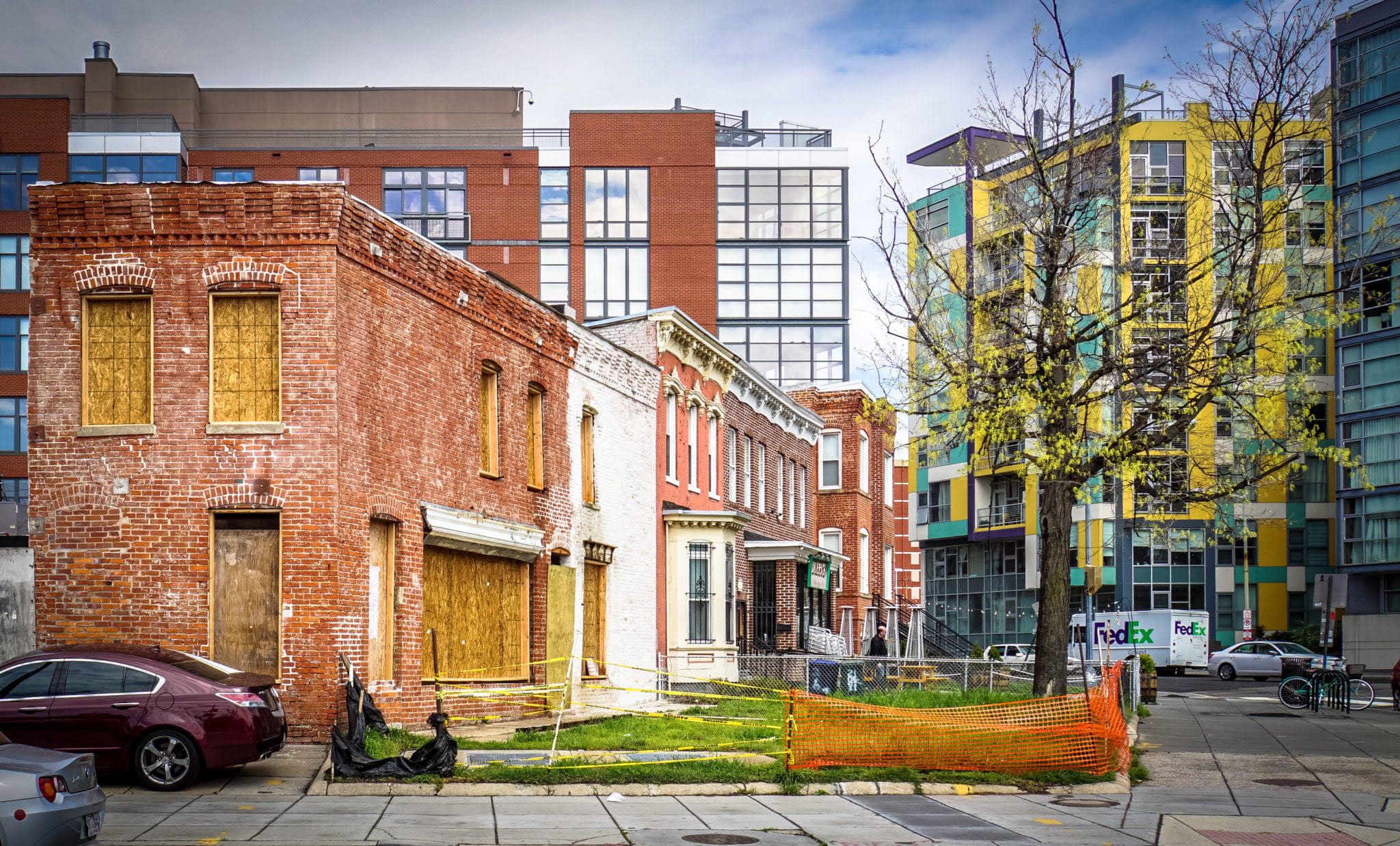
During the ‘70s, New York City was on the verge of bankruptcy and losing population.1 These issues led to the introduction of tax incentives and to encourage developments to bolster economic development. It wasn’t until the ‘80s that affordable housing and geographic restrictions were introduced in fiscal benefits. Nevertheless, the results weren’t as expected and taxes financed more market-rate than affordable units, most of them built in low-income areas outside of Manhattan.2
At the beginning of the century, the City introduced a massive process of rezonings to spur integration in several neighborhoods. This process led to the modification of zoning regulations in almost 18% of the City’s total lot area between 2003 and 2007.3 The rationale behind this was to augment the building capacity through Floor Area Ratio (FAR) and density, making housing rents more affordable by increasing the overall housing supply.4 However, the rezoning announcements led developers to start buying more land and developing new residential buildings in these neighborhoods.
The land regulation fueled speculative investments ending in a massive influx of new constructions and increases in residential sales at higher rates than the rest of the City.5 An iconic case is the 2005 rezoning of the Greenpoint-Williamsburg waterfront that reconverted an industrial and low-income district into one of the most thriving neighborhoods in NYC. The rezoning changed the demographic composition of the neighborhood by increasing the percentage of affluent white households. The new rents and demographic composition also changed retail stores and their products, triggering reductions in disposable income and augmenting rent-burden,6 catalyzing the displacement of low-income families unable to live there anymore.
This outcome is a clear example of how a non-price regulation can produce a rebound effect higher than the original outcome, resulting in higher rent prices than the original scenario. Moreover, the result also reduced the overall well-being since segregation and displacement produce a high burden on low-income families. Spatial segregation imposes more constraints and costs to residents of low-income districts,7 negatively impacts social well-being, limits returns on educational attainment, and reduces economic mobility,8 9 especially on children that are exposed more time to segregated neighborhoods.10
As a response to the increasing segregation, the City enacted Mandatory Inclusionary Housing (MIH) in areas of public interest, forcing developments to include a percentage of rent-controlled affordable units in their projects. In exchange for participating, developers get as-of-right zoning benefits to produce more units. As several studies state, MIH is only financially feasible in strong markets and affluent neighborhoods; if not, market-rate units are not able to cross-subsidize affordable dwellings.11 12 Nevertheless, developers reacted by walking away from these areas and started developing in less constrained neighborhoods due to the loss in future revenues that impose preserving rent-controlled units in strong and consolidated markets.
As a result, until 2019, MIH has created only 2,065 new dwellings -and only six developments in Manhattan- while Voluntary Inclusionary Housing (VIH) -a similar version with fewer benefits but without impositions- has contributed with 8,476 new units.13 More importantly, MIH has mostly been used in low-income neighborhoods where the program is not needed. Contrastingly, VIH has been used in several affluent areas of Manhattan,14 proving how spatial leakage acts when several constraints are imposed.
As can be seen, these policies have created adverse results, forcing low-income families to move from improved neighborhoods, proving the downsides of place-based strategies. Even if tenant protection laws have been enforced in the last years, the cost of living becomes infeasible for them. Policymakers need to remind that real estate is a business, and developers won’t always consider what’s best for the City. Instead, they will look for financial feasibility to build their projects, and if it’s not met, they will move to less constrained areas to develop. This fact is important because the unintended consequences can undermine the City’s overall goal of social integration as well as people’s well-being.
Sources:
1.) Wu, Jenny (2012): NYC Property Tax Exemption Program: Existing Policies and Future Planning. Department of Architecture and Planning: Massachusetts Institute of Technology
2.) Cohen, Seth (2009): Teaching an Old Policy New Tricks: The 421-A Tax Program and the Flaws of Trickle-Down Housing. Journal of Law and Policy.
3.) “How Have Recent Rezonings Affected the City’s Ability to Grow?” Furman Center for Real Estate and Urba Defined as using more than 30% of income for paying rent.n Policy, Mar. 2010, 8.
4.) Brian, Charles, “Will Up- Zoning Make Housing More Affordable?” Governing, July 2019.
5.) Goldberg, L. (2011). “Game of Zones: Neighborhood Rezonings and Uneven Urban Growth in Bloomberg’s New York City.” (Unpublished Master’s Thesis). Massachusetts Institute of Technology. Cambridge, MA.
6.) Defined as using more than 30% of income for paying rent.
7.) Wilson, William Julius. 1997. “When Work Disappears: The World of the New Urban Poor.” Chapter 2.
8.) Graham, Bryan, and Patrick Sharkey. 2013. “Mobility and the metropolis: How communities factor into economic mobility.” Pew Charitable Trust.
9.) Li, H., H. Campbell, and S. Fernandez. 2013. “Residential Segregation, Spatial Mismatch and Economic Growth across US Metropolitan Areas.” Urban Studies.
10.) Bischoff, Kendra, and Sean F. Reardon. 2014. “Residential segregation by income, 1970-2009.” Diversity and Disparities: America Enters a New Century. New York: The Russell Sage Foundation.
11.) “Creating Affordable Housing Our of Thin Air.” NYU Furman Center, March 2015.
12.) “Market & Financial Study: NYC Mandatory Inclusionary Housing,” NYC Housing Development Corporation, September 2015.
13.) Kober, Eric. “De Blasio’s Mandatory Inclusionary Housing Program: What is Wrong and How it Can Be Made Right.” January 2020.
14.) HPD Housing Inclusionary Sites – NYC Department of Housing Preservation & Development. February 2020.
Cover Image: D.C. Policy Center